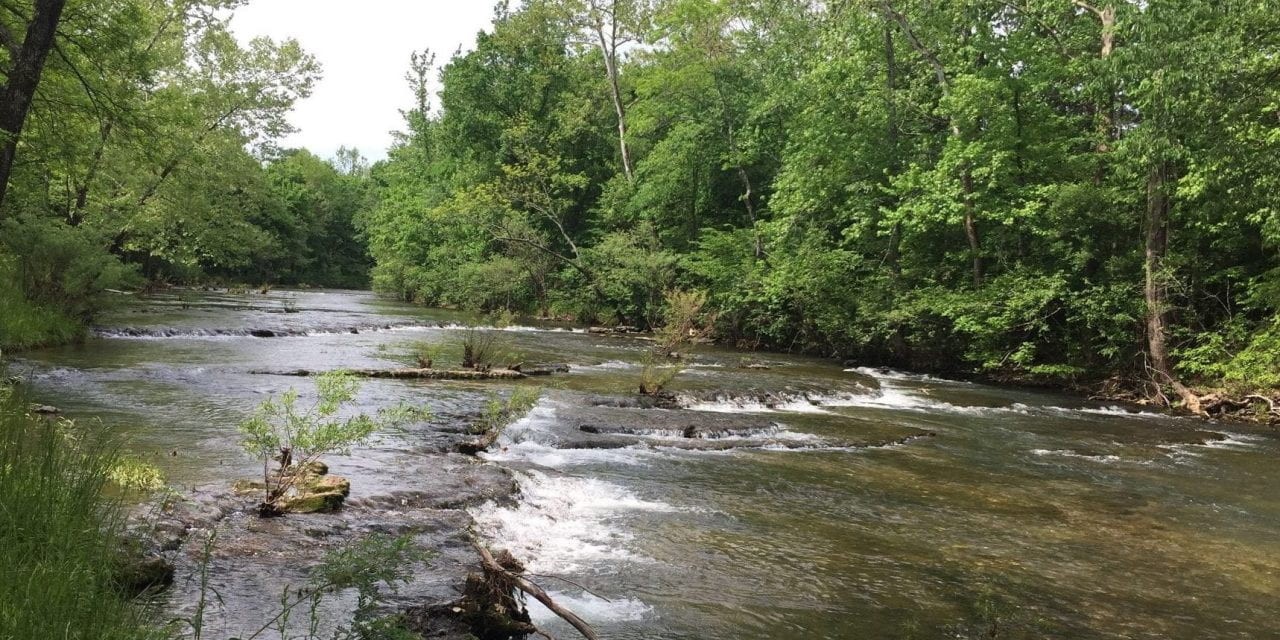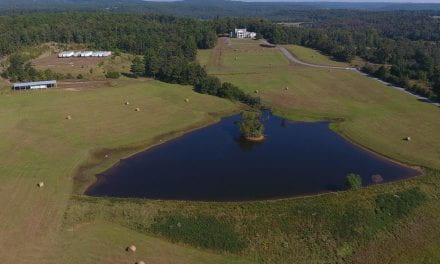
Researchers Characterize Nutrient Sources in the Big Creek, Sub-Watershed of the Buffalo River

In recent years, Big Creek, a tributary of the Buffalo River in Northwest Arkansas, has become well known for the confined animal feeding operation or CAFO within its watershed. There has been concern over how the CAFO might influence the water quality in Big Creek and the Buffalo River downstream.
This has spurred a lot of research interest into surface water quality and transport pathways through the karst network near the CAFO. One research group from the University of Arkansas used stable isotopes and geochemical tools to help characterize the sources, transport pathways, and transformations of nutrients within the Big Creek Watershed.
Kelly Sokolosky, a master’s student from the University of Arkansas, worked with her adviser Dr. Phillip Hays in the Department of Geosciences along with collaborator Erik Pollock, manager of the University of Arkansas Stable Isotope Laboratory, to accomplish several objectives. Their objectives revolved around using isotopes to establish a database of the potential nutrient sources in the watershed, track the transport, transformation and cycling of nitrogen and phosphorus, and characterize water sources and pathways in the watershed.
Specifically, potential nutrient sources such as livestock manure, waste-holding ponds, commercial fertilizer, and residential septic systems, were analyzed to determine the isotopic signatures of each source. To track the transport of the nutrient sources, they collected water samples from nearby streams during base-flow and storm-flow conditions. They also collected runoff water from three fields near the CAFO (two of which were fertilized with manure from the CAFO) and a parking lot near Mt. Judea. Water chemistry and the isotopic signatures for nitrate, phosphate, and water were analyzed in all of the samples collected.
Elements such as nitrogen (N) and oxygen (O) have multiple forms of different masses called isotopes. Ratios of heavy to light isotopes for N in N-based chemicals have a distinct signature specific to the source in which it is found, and the same is true for O. These distinct isotopic signatures can be used to trace nutrients found in streams and rivers back to their original source, such as hog waste or fertilizer that is applied to a field. Biological processing of nutrients can modify the isotopic ratios of N and O in a quantifiable way, allowing them to be traced back to their original source even if they are not in their original form.
Water quality and isotopic data of nitrate in Big Creek exhibited different isotopic signatures for N and O than what was directly measured in the potential nutrient sources. However, nitrate isotopes in Big Creek were similar to nitrate isotopic values expected from nitrification, a biological process that converts ammonia to nitrate in soil from the watershed.
“This difference between the isotopic signature of nitrate in the nutrient sources and Big Creek suggests that the nutrients from the tested sources likely are not immediately and directly input into Big Creek,” said Erik Pollock. “If they are contributing to Big Creek’s nutrient load then they are going through a considerable amount of modification on the landscape before they enter the stream,” he added.
Like isotopes, ratios of anions like chloride and bromide in a water sample can be useful in linking nutrients in a waterbody to their source. In this study, chloride to bromide ratios were used to examine potential influences of human development on Big Creek. Results from this analysis suggest that both cattle manure and human waste from septic-systems in the watershed may influence the water quality in Big Creek.
Findings from this study highlight that nutrients entering Big Creek are likely coming from multiple sources.
“Effective agricultural, residential, and urban best management practices are necessary to help protect the water quality in Big Creek,” said Kelly Sokolosky. “We recommend that monitoring continues on Big Creek to ensure potential future effects on water quality are recognized,” she added.
This research was funded by the U.S. Geological Survey 104B program through the Arkansas Water Resources Center and was published in the 2018 Arkansas Bulletin of Water Research.















